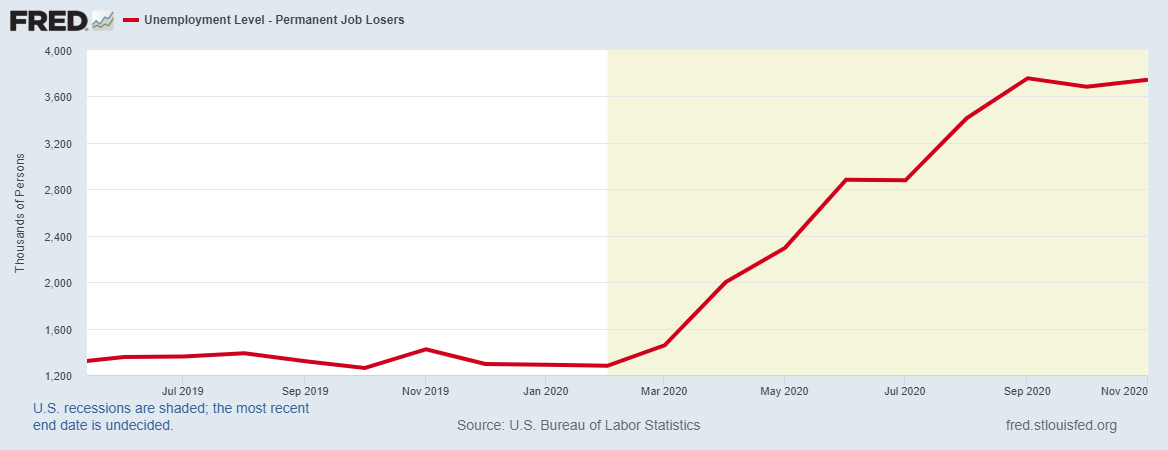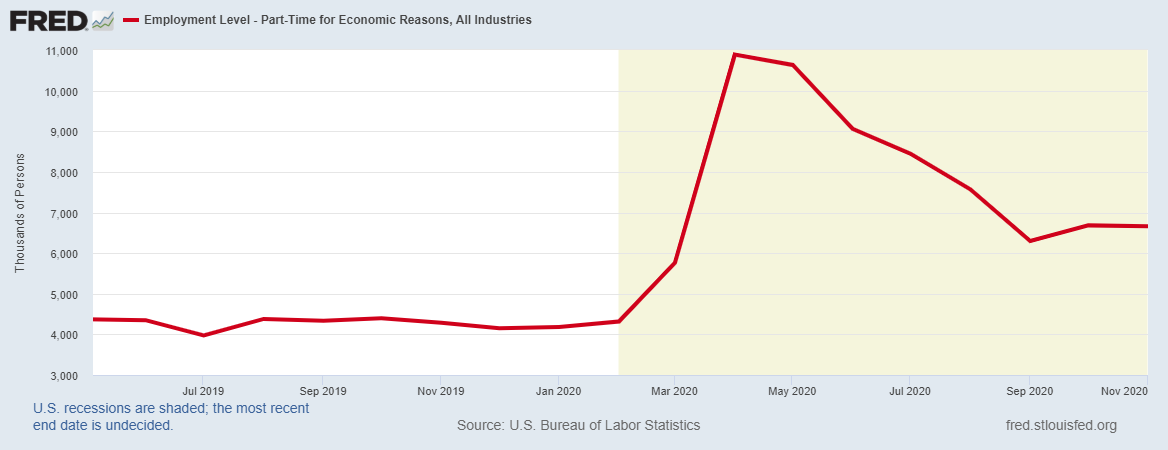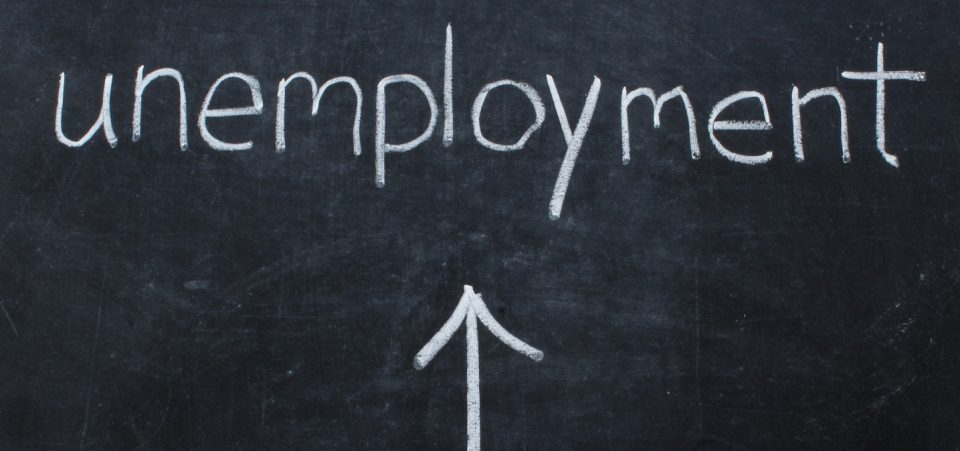The U.S. Job Market Is Tormented & Things Won’t End Well
The U.S. job market is tormented. This will impact the economy and possibly make the current economic slowdown even worse.
The mainstream media is really doing a horrible job at covering what’s happening in the U.S. job market. There are a lot of problems that no one seems to be paying attention to.
You might read in the headlines that the U.S. has added an immense number of jobs in a given month, and that the overall unemployment rate has declined. But you must dig into the details, because that’s where the devil resides.
Permanent Job Losers Soar 192%
For starters, look at an alternative measure of the U.S. unemployment rate, sometimes referred to as “U-6.” This unemployment rate takes into account people who are marginally attached to the U.S. job market and another sub-group. The U-6 unemployment rate stood at 12% in November. Meanwhile, the headline unemployment rate was 6.7%. (Source: “Table A-15. Alternative Measures of Labor Underutilization,” U.S. Bureau of Labor Statistics, last accessed December 4, 2020.)
Look at the chart below. It plots the number of Americans who are “permanent job losers.” These are individuals whose jobs have ended involuntarily. They are not temporarily laid off; their jobs aren’t there anymore.

(Source: “Unemployment Level – Permanent Job Losers,” Federal Reserve Bank of St. Louis, last accessed December 4, 2020.)
In February, prior to the COVID-19-induced economic slowdown, about 1.3 million Americans were permanent job losers. Now this figure is 3.7 million.
If you look at the above chart, you’ll notice that, throughout the current slowdown, the number of permanent job losers in the U.S. has trended higher, even when we’re told there’s job creation and that the unemployment rate has dropped. In fact, the number of permanent job losers has jumped 192% in just a matter of a few months.
If the chart above isn’t enough to convince you about the current health of the U.S. job market, look at the chart below. It plots the number of Americans working part-time for economic reasons. These are individuals who are working part-time because they can’t find full-time work.

(Source: “Employment Level – Part-Time for Economic Reasons, All Industries,” Federal Reserve Bank of St. Louis, last accessed December 4, 2020.)
This figure has seen a troubling increase. Prior to the beginning of this year’s economic slowdown, there were 4.3 million Americans working part-time for economic reasons. That number now stands at 6.7 million, and it went as high as 10.9 million in April.
That means the number of Americans working part-time for economic reasons is 58% higher than it was before the slowdown.
Why the Current State of the U.S. Job Market Is Worrisome
Dear reader, let me repeat what I said earlier: the U.S. job market is fundamentally tormented.
Here’s why this all matters. What do you think will happen if Americans either 1) don’t have jobs, 2) think their jobs won’t be around for long, or 3) are working fewer hours than they used to? Their spending will decline.
Note that the U.S. economy is heavily reliant on consumption; it accounts for about 70% of the country’s gross domestic product (GDP). If consumers are pessimistic because they’re worried about their work situation, they won’t spend much money. That would take a toll on the U.S. economy; the slowdown we’re in could get worse.






